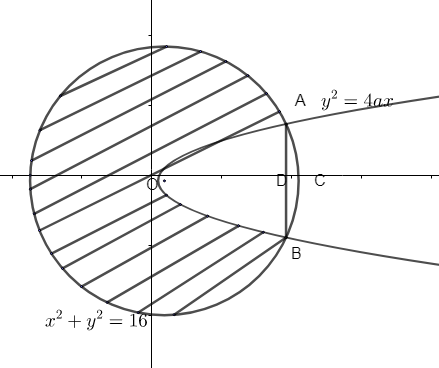Question
Question: The area of the circle \[{{x}^{2}}+{{y}^{2}}=16\] exterior to the parabola \[{{y}^{2}}=6x\]is a). ...
The area of the circle x2+y2=16 exterior to the parabola y2=6xis
a). 34(4π−3)
b). 34(8π−3)
c). 34(4π+3)
d). 34(8π+3)
Solution
Substitute y2=6x in the equation of circle x2+y2=16 and find the value of x and find the points which intersects parabola with circle. Thus, to find the required area, subtract the area of the circle with the area of the parabola which is exterior to the circle.
Complete step-by-step solution:
First, we will draw the corresponding figure,
draw the circle x2+y2=16, where center is (0, 0).
Radius of the circle = r=16=4
And draw the parabola, y2=6x.

Now, we need to find the intersection A and B i.e., the intersection points of the parabola with the circle.
We know, y2=6x, put the value of y2in the equation of circle, we get
